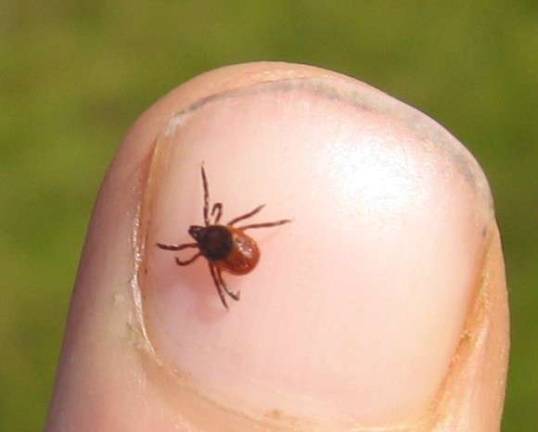Schumer Warns: Beware of Ticks in Central Park


NY senator sponsors Lyme disease awareness and prevention legislation, calls on CDC to investigate
Lyme disease doesn't usually cross the urban-dweller's mind as something to be wary of, but Sen. Chuck Schumer (D-NY) wants to change that.
New York City and Long Island have the highest number of cases in the state, according to Schumer's office, making these areas most likely to face new and growing threats from other tick-borne illnesses. Indeed, with the recent discovery of Powassan Encephalitis in New York - an often fatal virus transmitted by ticks - a renewed focus on the dangers of disease-carrying ticks has occurred.
Schumer held a press conference on the Upper West Side outside Central Park on Sunday, Aug. 11, to call attention to the risks of infection by certain kinds of ticks.
According to a release from Schumer's office, "The Powassan virus causes debilitating symptoms similar to Lyme disease, but it is much more dangerous: it can transmit much more quickly than Lyme disease, there is currently no treatment for Powassan virus, and it is much more lethal ? killing 30 percent of those affected statewide since 2004."
Schumer is co-sponsoring the Lyme and Tick-Borne Disease Prevention, Education, and Research Act, which would expand research into Lyme disease, improve education, and require the Secretary of Health and Human Services to submit a report for health professionals on the latest research and treatment for tick-borne illnesses.
Schumer also is calling on the Centers for Disease Control and Prevention to fund research on containing and treating the Powassan virus and drug-resistant strains of Lyme disease and to work with local health departments on diagnosis and prevention methods.
"Already, Lyme disease is one of the least-understood illnesses plaguing residents in New York and all of the Northeast," said Schumer in a statement. "Now, with the emerging threat of new tick-borne illnesses like Powassan virus and antibiotic-resistant strains of Lyme, the need for more research is clear and compelling. We need to bring Lyme disease and the Powassan virus out of the weeds and better educate the public about how to keep themselves and their families safe."
In 2011, the last year for which information is available, New York City had the second highest number of Lyme disease cases with 731. Suffolk County had 656 cases of Lyme disease and Nassau County had 98 cases of Lyme disease, according to Schumer's office.
The symptoms of Lyme disease are a red bull's eye rash around the area of the bite - which may not appear for days or weeks or not at all, accompanied by the flu-like symptoms of fatigue, stiff neck, aches and pains in muscles and joints, low-grade fever and chills, poor appetite and swollen glands.
However, even though symptoms of other tick-borne illnesses can be similar to those of Lyme disease, they may be less severe or not evident at all.
One such illness, borrelia miyamotoi, is a new tick-borne illness with symptoms similar to Lyme disease but a Lyme disease test will come back negative, making it hard to diagnose
According to Schumer's office, only 15 cases of Powassan virus have been detected in New York in the last nine years. However, there had been less than one case per year in the previous 40 years, indicating that incidence of the virus is on the rise. In a five-year study ending in 2012, researchers found that six percent of 13,500 ticks studied carried the virus in New York, depending on the county. Ten of the patients were from Westchester, Putnam and Dutchess counties - consistent with the cluster of infected ticks.
There is no treatment for the Powassan virus, which can cause central nervous malfunction, meningitis and encephalitis (swelling of the brain). Doctors can only address the symptoms of the virus, which can be transmitted from tick to human in as little as 15 minutes.
Joan Green with the NYC Lyme Support Group has been living with Lyme disease for 20 years. She said there should be signs in Central Park warning people to be on the lookout for ticks like there are in wooded areas in upstate New York.